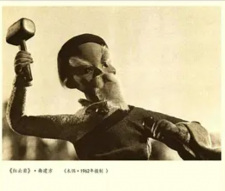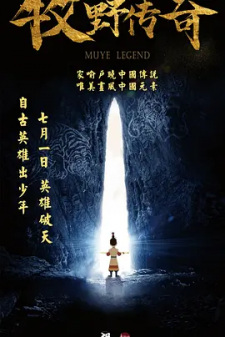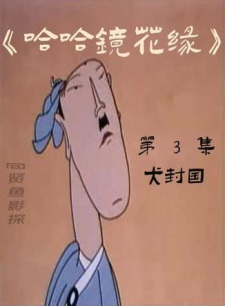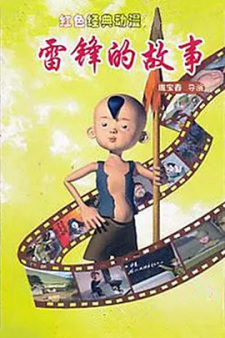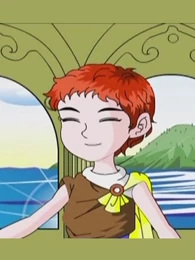- All
- Not In My List
- Watching
- Completed
- On-Hold
- Dropped
- Plan to Watch
Members
Score
Newest
Title
The second season of Baka Mukashibanashi.
(No synopsis yet.)
(No synopsis yet.)
(No synopsis yet.)
(No synopsis yet.)
(No synopsis yet.)
(No synopsis yet.)
A story about a dharmapala, a Buddhist deity that often takes on the form of a child, who helps a monk on various adventures. From healing a sick emperor to returning a stolen rice bowl, this charming story is rooted in the mythology of Chougosonshi-ji temple on Mt. Shigi in Nara, Japan. (Source: Collaborative Cataloging Japan)
(No synopsis yet.)
The second season of Canzhuo Shang De Shi Shuo Xin Yu.
(No synopsis yet.)
(No synopsis yet.)
(No synopsis yet.)
(No synopsis yet.)
(No synopsis yet.)
(No synopsis yet.)
(No synopsis yet.)
A story about the war between communism and capitalism in China.
(No synopsis yet.)
(No synopsis yet.)
(No synopsis yet.)
(No synopsis yet.)
(No synopsis yet.)
(No synopsis yet.)
(No synopsis yet.)
(No synopsis yet.)
(No synopsis yet.)
Kaleidoscope is a tribute to China’s 56 ethnic groups. Directed and animated by Zhou Fangyuan. It's her Tsinghua Academy of Fine Arts graduation project.
(No synopsis yet.)
(No synopsis yet.)
(No synopsis yet.)
(No synopsis yet.)
(No synopsis yet.)
(No synopsis yet.)
(No synopsis yet.)
(No synopsis yet.)
(No synopsis yet.)
Music video for the song Futari de Hanbunko by Mitsuko Horie, Mamoru Ichiba, Titine & Children Chorus, and the Morinoki Jidou Gasshoudan that was featured on NHK's Minna no Uta program. The song was featured as the ending for Meiken Jolie. The video features characters from the series, but it is entirely new animation.
(No synopsis yet.)
(No synopsis yet.)
(No synopsis yet.)
(No synopsis yet.)
(No synopsis yet.)
(No synopsis yet.)
Around 1,000 years ago in Japan, Kyoto was the center of the government and the nobles seized political power. During this era, there were female dancers called Shirabyoushi and they performed for nobles. This story is about a slightly mysterious love between a Shirabyoushi and her coachman. (Source: YouTube)
(No synopsis yet.)
(No synopsis yet.)
(No synopsis yet.)
In 742 A.D., the first year of Xuantianbao in Tang Dynasty, Japanese monks Rongrui and Puzhao heard of the reputation of Monk Jianzhen, and they went to Daming Temple in Yangzhou to meet with Monk Jianzhen and invited him to Japan to teach the Dharma. The Great Monk Zhen carried forward the Dharma for Dongdu. After five failures, including the death of his disciples, the obstruction of the government, and even blindness in both eyes, etc., he still did not change his ambition. He combined the then prosperous Chinese Buddhism with Chinese medicine, art, and architecture, literature, etc., were transmitted to Japan by water. Monk Jianzhen not only introduced precepts to complete the Japanese Vinaya sect, but also indirectly influenced the rise of two masters in the history of Japanese Buddhism—Kukairen of Shingon and Saicheng Master of Tendai Sect, and thus developed the development of Japanese Buddhism in the Heian and Ikura periods. Heyday. In terms of cultural influence, the architecture, sculpture, calligraphy, painting, medicine and even people's daily necessities introduced by the master Dongdu left the Tang culture with a precious and rich heritage in Japan. That is why Monk Jianzhen was praised as the "giant of balance culture" in Japan. Through the presentation of animation, this film hopes to introduce the public to understand the life of a generation of masters. (Source: Baidu Encyclopedia, translated)
(No synopsis yet.)
(No synopsis yet.)
(No synopsis yet.)
(No synopsis yet.)
Special animated corners part of FNS 27-Jikan TV: Nihon no Rekishi that aired on Fuji TV. The corners feature characters from Chibi Maruko-chan, Dragon Ball Super, Kochira Katsushikaku Kameari Kouenmae Hashutsujo, and One Piece as they explore the history of Japan's from the Paleolithic to Heisei period.
(No synopsis yet.)
(No synopsis yet.)
(No synopsis yet.)
(No synopsis yet.)
(No synopsis yet.)
(No synopsis yet.)
An adaptation of the Chinese folktale The Cowherd and the Weaver Girl.
(No synopsis yet.)
(No synopsis yet.)
(No synopsis yet.)
(No synopsis yet.)
(No synopsis yet.)
(No synopsis yet.)
(No synopsis yet.)
(No synopsis yet.)
A silhouette animation version of Princess Kaguya, also known as The Tale of the Bamboo Cutter, a 10th century folk tale.
(No synopsis yet.)
(No synopsis yet.)
(No synopsis yet.)
(No synopsis yet.)
A generation of Sword Emperor, entered the cycle of reincarnation and was reborn, practiced the ancient methods, forged the flesh and earth, broke the shackles of the gods, and smashed the conspiracy to deceive the world! (Source: Youku, Google translated)
(No synopsis yet.)
(No synopsis yet.)
(No synopsis yet.)
(No synopsis yet.)
(No synopsis yet.)
(No synopsis yet.)
(No synopsis yet.)
(No synopsis yet.)
(No synopsis yet.)
(No synopsis yet.)
(No synopsis yet.)
(No synopsis yet.)
(No synopsis yet.)
(No synopsis yet.)
(No synopsis yet.)
(No synopsis yet.)
Etupirka: A Bird that Spins Thoughts is a animated film created based on the testimonies of former residents of the Northern Territories. The film was produced with the aim of helping many people, especially young people, learn more about what happened in the Northern Territories at the end of the war and the harsh experiences of the former islanders who were forced to leave their homes, and to raise momentum for the return of the Northern Territories. (Source: Official site, translated)
(No synopsis yet.)
(No synopsis yet.)
(No synopsis yet.)
(No synopsis yet.)
(No synopsis yet.)
(No synopsis yet.)
(No synopsis yet.)
(No synopsis yet.)

















